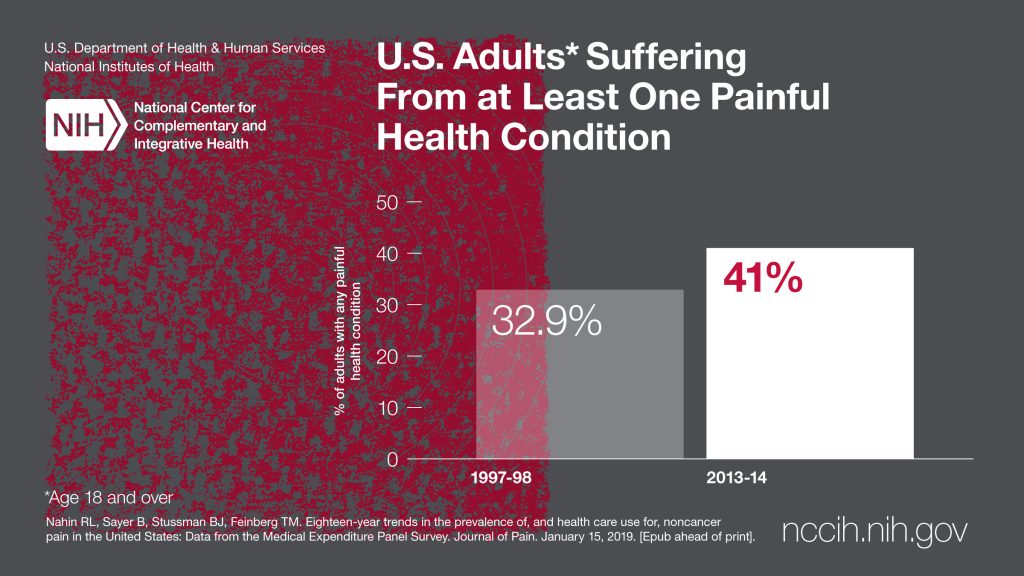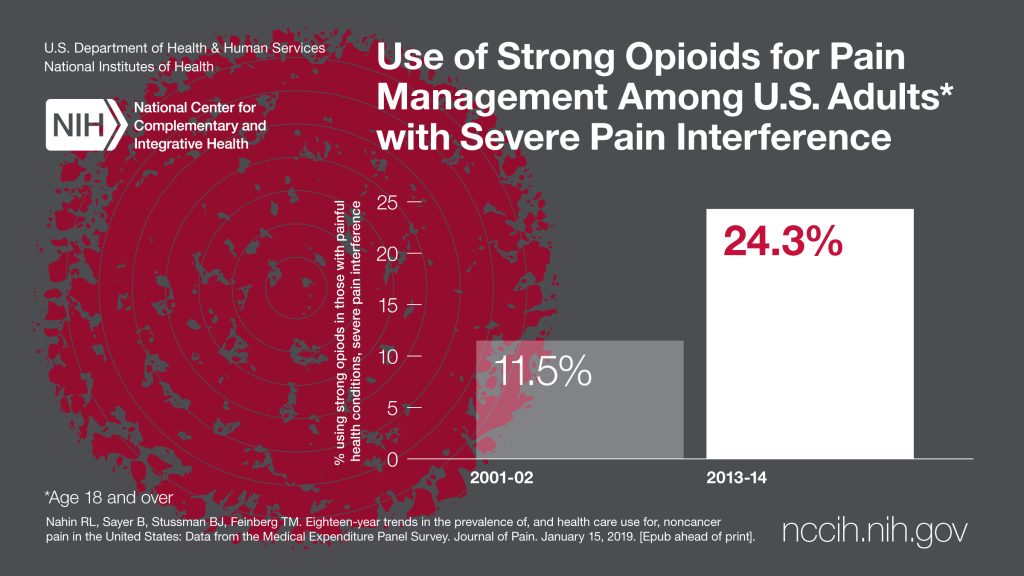Prevalence of Chronic Pain Increasing
This article, in a slightly edited form, first appeared on Pain News Network on February 22, 2019.
According to the Centers for Disease Control and Prevention, opioid prescribing quadrupled from 1999 to 2010. Some policymakers suggest that the amount prescribed in 1999 was appropriate and should remain static, and that any prescribing above the 1999 level exceeds the amount required to meet the needs of people in pain.
Perhaps, but it is important to understand that pain was vastly undertreated in the 1990s and there was a clear need to find effective treatment for pain patients. At least some of the increase in opioid prescribing would also seem logical, based on the greater number of people in pain.
According to the National Institutes of Health (NIH), the number of American adults suffering from at least one painful condition increased substantially from 120.2 million in 1997 to 178 million in 2014 – about 33.5 percent of the adult population. These numbers are from a comprehensive analysis of 18-year trends in the rates of noncancer pain, recently published in the Journal of Pain.

Aging Population
The NIH report may make you wonder why there are more people in pain now than there were in 1999. Here are some possible explanations.
Our aging population includes an ever-increasing number of elderly people. Baby boomers, who make up the largest demographic of society, recently began to enter their 70s. That is the decade during which we begin to experience a much greater prevalence of arthritis, spinal pain, obesity, surgical operations and cancer.
Mortality rates for cancer continue to decline, thanks to better treatments. More than 40% of cancer survivors now live longer than 10 years. That is good, of course, but many cancer survivors experience treatment-related chronic pain.
Aging increases the likelihood that people will experience chronic pain. More than half of all adults older than 65 experience arthritic pain of the spine and other joints. For more age-related statistics regarding arthritis, click on this U.S. government PubMed abstract, the CDC’s arthritis information page or the Arthritis Foundation’s website.
In all age groups, the U.S. has an obesity epidemic (according to the CDC and the Journal of the American Medical Association) which can lead to diabetes. Obesity causes increased load on the back and joints, causing chronic pain. In addition, more people have peripheral neuropathy caused by diabetes.
Finally, there is the problem of chronic post-surgical pain, which we began to recognize around the turn of the century. The incidence of chronic pain after major surgery is estimated to lie between 20% and 50%. Relatively minor operations, such as inguinal hernia repair or a C-section, seem to lead to this problem in approximately 10% of patients. This is an annuity that will keep growing as more operations occur every year.
The increased prevalence of chronic pain has probably contributed to a greater number of opioid prescriptions. In addition, we have historically failed to recognize that pain deserves to be treated.
Alternative therapies like massage and acupuncture have not been widely available due to lack of insurance coverage. Thus, many people in chronic pain have not had access to any therapy except opioids. This can partially explain why there was an increase in the amount of opioids prescribed from 2001 to 2014.

Undertreated Pain
Quadrupling the amount of opioids prescribed over several decades may sound excessive, unless we consider the growing number of people who were undertreated and in severe pain, year after year.
Additionally, we must recognize opioids have not been distributed equally. It is possible that more opioids have been prescribed than appropriate for some patient populations, while other patients have been denied access to any pain treatment.
A major shift in opioid prescribing began several years ago and by all accounts is accelerating. Between 2013 and 2017, the amount of opioids prescribed declined by 22%. The people most affected by the decrease appear to be those who reported benefit from opioid therapy.
The amount of opioids that should be prescribed will remain open to debate. But millions of Americans have been — and continue to be — denied access to pain treatment, and there should be no debate about the fact that failure to treat severe pain is unacceptable.
Everyone in the health care system and policymakers should be concerned about the NIH report on the prevalence of chronic pain. The dramatic increase in the number of people with chronic pain warrants our examination of all polices and resources to ensure that this population is receiving the care they need and deserve.
This is a very revealing article, it’s telling much of the history that we haven’t been told. It’s answering the questions: What did people do before pharmaceutical companies started telling doctors to sell painkillers? Answer: Pain was terribly undertreated. We became able to treat more pain in better ways. People have been able to have more productive lives and a far better quality of life due to the availability of narcotic pain medications. They develop dependence on the medication, but are able to do more of what they want to do.
Now we are taking away independence along with reducing or removing the medications that people have taken for 30 years, with only known side effects such as constipation, which we deal with.
These are not addicts but people with productive lives, thanks to the availability of medicine to help their pain.
Very informative article. Please continue to educate the public of the importance of allowing Physician and paitient to determine the best medication to support the chronic pain patient. The government must not be allowed to be the barrier that prevents the best standards of care for patients.
Thank you for the information and all you do to help pain patients.